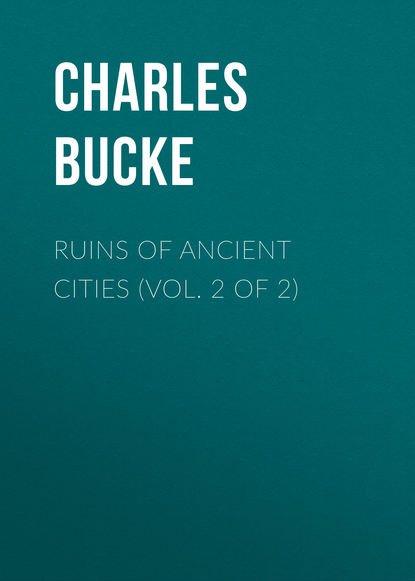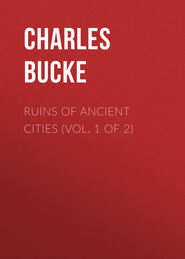По всем вопросам обращайтесь на: info@litportal.ru
(©) 2003-2024.
✖
Ruins of Ancient Cities (Vol. 2 of 2)
Настройки чтения
Размер шрифта
Высота строк
Поля
97
Chandler; Barthelemy; Rees; Brewster; Gell.
98
Rollin.
99
Dodwell.
100
Herodotus; Rollin; Barthelemy; Rees; Brewster; Clarke; Dodwell; Williams.
101
By an accident this article is misplaced, which, it is hoped, the reader will be pleased to excuse.
102
“Biferique rosaria Pæsti.”
103
Eustace.
104
Ibid.
105
Anon.
106
Eustace.
107
Anon.
108
Clarke.
109
The Doric order may be thus defined: – a column without a base, terminated by a capital, consisting of a square abacus, with an ovolo and annulets. An entablature, consisting of the parts, – architrave, frieze, and cornice; the architrave plain, the frieze ornamented with triglyphs symmetrically disposed, and a cornice with mutules. These are sufficient to constitute a definition; and are, I believe, all that can be asserted without exception; but some others may be added as necessary to the beauty and perfection of the order; and which, though not universal, are, however, general among the examples of antiquity. – Aikin, on the Doric order.
110
Swinburne.
111
Ibid.
112
Forsyth.
113
Eustace.
114
Forsyth.
115
Ibid.
116
Eustace.
117
Dupaty; Stuart; Swinburne; Eustace; Clarke; Forsyth; Williams; Chambers; Knight; Parker; Rees; Brewster.
118
See Herculaneum, vol. i. p. 335.
119
Ibid.
120
It is well known that the Romans constructed with great solidity, and maintained with constant care, roads diverging from the capital to the extremities of the empire. The good condition of these was thought to be of such importance, that the charge was only entrusted to persons of the highest dignity, and Augustus himself assumed the care of those in the neighbourhood of Rome. The expense of their construction was enormous, but they were built to last for ever, and to this day remain entire and level, in many parts of the world, where they have not been exposed to destructive violence. They usually were raised some height above the ground which they traversed, and proceeded in as straight a line as possible, running over hill and valley with a sovereign contempt for all the principles of engineering. They consisted of three distinct layers of materials; the lowest, stones mixed with cement, (statumen); the middle, gravel or small stones, (rudera), to prepare a level and unyielding surface to receive the upper and most important structure, which consisted of large masses accurately fitted together. It is curious to observe that, after many ages of imperfect paving, we have returned to the same plan. The new pavement of Cheapside and Holborn is based in the same way upon broken granite, instead of loose earth which is constantly working through the interstices, and vitiating the solid bearing which the stones should possess. A further security against its working into holes is given by dressing each stone accurately to the same breadth, and into the form of a wedge, like the voussoirs of an arch, so that each tier of stones spans the street like a bridge. This is an improvement on the Roman system: they depended for the solidity of their construction on the size of their blocks, which were irregularly shaped, although carefully and firmly fitted. These roads, especially in the neighbourhood of cities, had, on both sides, raised footways (margines), protected by curb-stones, which defined the extent of the central part (agger) for carriages. The latter was barrelled, that no water might lie upon it. —Gell.
121
Knight.






